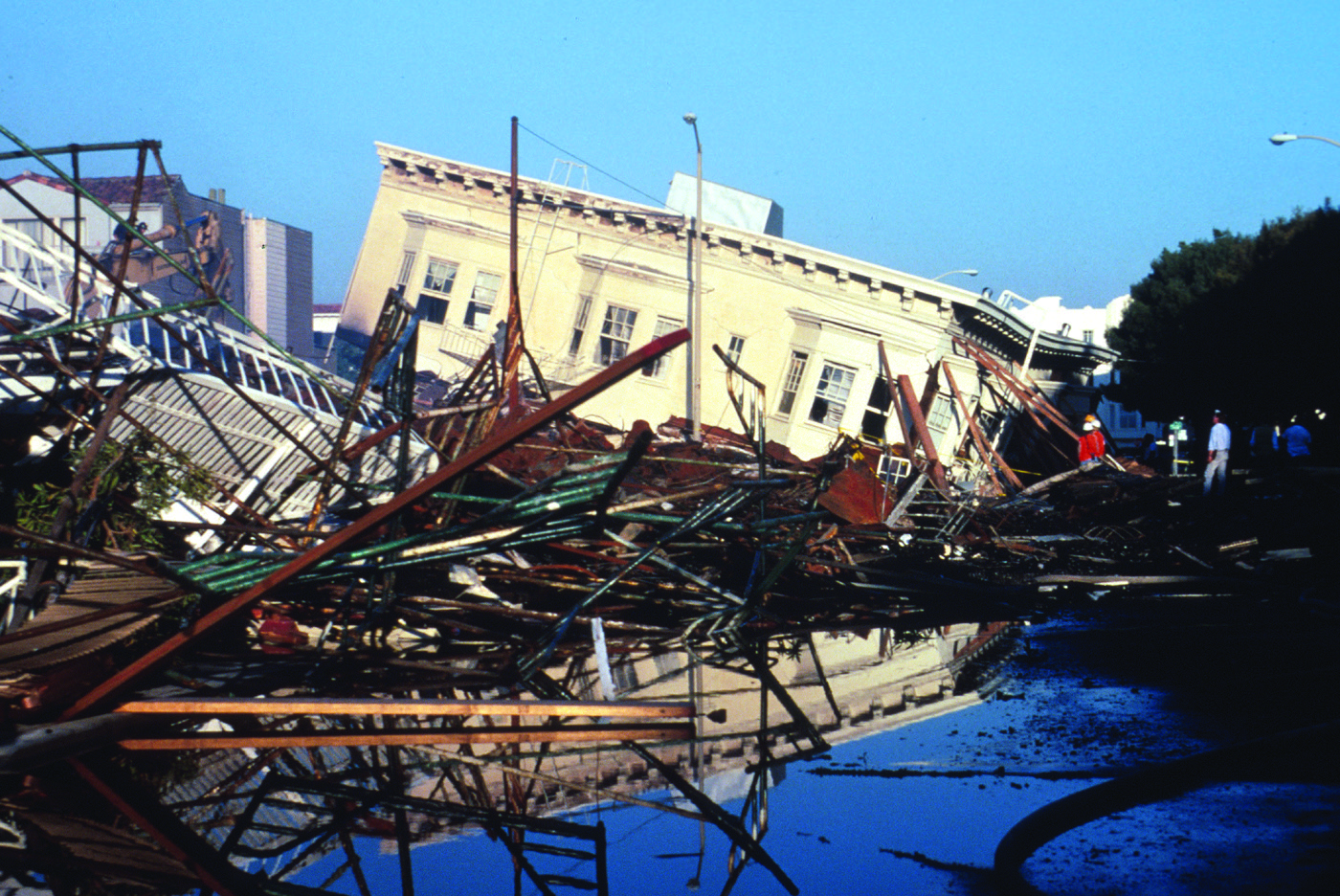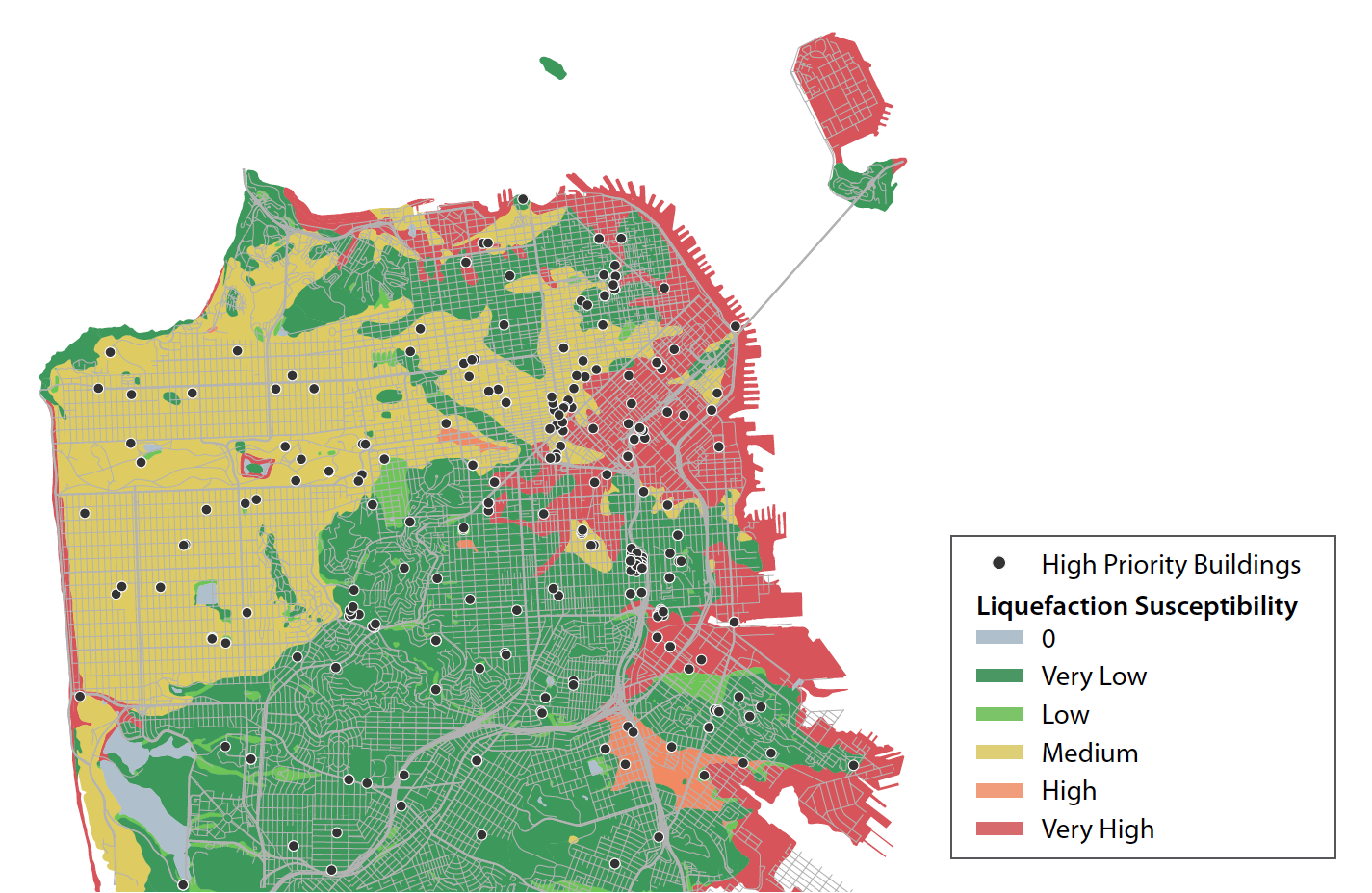
Nearly all of San Francisco’s homes, businesses, and essential facilities and infrastructure are located within the very violent and violent shaking intensity hazard areas for a large magnitude earthquake on both the San Andreas and Hayward Faults. Because the risk of a major earthquake is imminent and the potential damage significant, San Francisco is constantly seeking new ways to protect our residents, workers, and buildings from seismic risks. This section first discusses earthquake safety programs for private buildings (the Earthquake Safety Implementation Program) and then programs for public buildings and infrastructure.
Earthquake Safety Implementation Program
The Earthquake Safety Implementation Program (ESIP) is a comprehensive plan of 50 tasks that grew out of the Community Action Plan for Seismic Safety (CAPSS) to address the City’s most pressing private building seismic risks in partnership with our communities. Priority ESIP tasks currently underway include the Soft Story Retrofit Program, Tall Building Safety Strategy, and the Private School Earthquake Safety Program.
The mandatory Soft Story Retrofit Program, started in 2013, applies to soft story apartment and condo buildings with five units or more. Nearly 5,000 buildings and over 110,000 residents are affected by this program. Without retrofitting, soft story buildings are vulnerable to collapse in earthquakes. Many studies by FEMA and others show that retrofitting makes a big difference (one in four chance of collapse without retrofitting vs. one in 30 with minimal retrofitting). Through this program, San Francisco is protecting the city’s residents and housing stock, which should help mitigate the crisis of post-disaster recovery housing. In addition, the program helps expand the city's housing stock by allowing owners to add an accessory dwelling unit when they retrofit.
In late 2018, San Francisco released the Tall Buildings Safety Strategy and related study to understand and improve the seismic resilience of our buildings 240 feet tall and greater. The study included 16 recommendations ranging from establishing recovery-based seismic design standards to developing Administrative Bulletins to clarifying roles and responsibilities for post-event safety inspection response.
San Francisco’s private schools are vital to our communities and play a role in educating more than 24,000 children. Since private schools are not required to meet the same level of seismic safety as public schools. San Francisco passed an ordinance requiring seismic safety evaluations by 2017. The City is in the process of reading them. This Private Schools Earthquake Evaluation Program is intended to begin a meaningful conversation about seismic safety in our private schools and mandatory evaluations that were due in late 2017 were the first step in the process. Currently the City is reviewing the evaluation reports.
A rising priority for ESIP is the Nonductile Concrete Building Retrofit Program. San Francisco estimates that there are approximately 3,300 publicly and privately owned older concrete buildings built before modern building codes in the city. As a result, some of these buildings have the potential to fail and collapse in an earthquake. The next step for San Francisco is to leverage best engineering practices to develop a screening and evaluation program to identify the most vulnerable buildings and develop a seismic retrofit program.
City-Owned Buildings and Infrastructure
In addition to improving the safety of private buildings, the Office of Resilience and Capital Planning is making efforts to address publicly owned infrastructure that is vulnerable to failure in an earthquake. The primary tools for such analysis include the HAZUS Earthquake Loss Estimation Study, Seismic Hazard Ratings, and new tools to look at non-structural building components.
The HAZUS Earthquake Loss Estimation Study is a standardized analysis developed by FEMA that uses geographic information systems data along with local facility and economic impact data to estimate the physical and economic impacts for specific earthquake scenarios. San Francisco is the first known municipality to have applied the HAZUS methodology at the individual building level, run first in 2013 and recently updated for 2017. The results from the most recent HAZUS analysis are shown in Table 4.1 and shown in the accompanying HAZUS map.
Seismic Hazard Ratings (SHRs) were first developed in San Francisco in 1992 and are used to assess risk and prioritize seismic-strengthening capital improvements for over 200 public buildings. Buildings are rated on a scale from one (best) to four (worst). At present the City has addressed nearly all of the buildings previously identified as SHR4, with the exceptions of 101 Grove Street and Kezar Pavillion, and many of those rated SHR3. Updating the ratings is important for the future prioritization of seismically vulnerable structures, and some additional vulnerabilities have been identified this way. City facilities including 170 Otis, public safety stations, and public health clinics have all been found in need of seismic safety work. That information has been incorporated into the prioritized projects of this Capital Plan.
Table 4.1
|
2017 SF HAZUS Results (Dollars in Millions) |
Hayward M6.9 |
San Andreas M6.5 |
San Andreas M7.2 |
San Andreas M7.9 |
|---|---|---|---|---|
|
Structural Damage |
107.2 |
133.4 |
212.3 |
353.1 |
|
Non-Structural Damage |
398.3 |
545.4 |
859.7 |
1,489.3 |
|
Subtotal, Building Damage |
505.5 |
678.8 |
1,072.0 |
1,842.4 |
|
Content Damage |
130.1 |
426.7 |
523.6 |
714.3 |
|
Operational Losses (Rent, Relocation, and Lost Income) |
154.8 |
191.9 |
314.7 |
527.2 |
|
Total Economic Impact |
790.4 |
1,297.3 |
1,910.3 |
3,083.8 |


